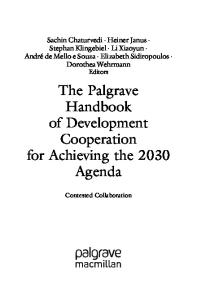Dmitri Sergeevich Merezhkovsky and the Silver Age The Development of
As the central event of modern times, the Bolshevik Revolution of 1917 remains a major focus of historical investigation and controversy. Unavoidably, the conception of the historical problems and the evidence presented are shaped by the historian's view
- PDF / 27,026,903 Bytes
- 253 Pages / 439.37 x 666.14 pts Page_size
- 123 Downloads / 320 Views
Dmitri Sergeevich Merezhkovsky and the Silver Age: THE DEVELOPMENT OF A REVOLUTIONARY MENTALITY
by
BERNICE GLATZER ROSENTHAL
• MARTINUS NIJHOFF/THE HAGUE/1975
To Lara
© 1975
by Martinus Nijhoff, The Hague, Netherlands Softcover reprint o/the hardcover 1st edition 1975 All rights reserved, including the right to translate or to reproduce this book or parts thereof in any form
ISBN 978-94-011-8353-6 ISBN 978-94-011-9036-7 (eBook) DOl 10.1007/978-94-011-9036-7
TABLE OF CONTENTS Acknowledgements
VII
1
INTRODUCTION
Part 1.
ART AS EXISTENTIAL ACTIVITY: THE ROLE OF SYMBOLISM IN
THE WORLD OF MEREZHKOVSKY
(1890-1899) .
13
Chapter I.
The Poetry of Spiritual Despair .
21
Chapter II.
The Formation of the Symbolist Ethos
37
Chapter III.
Nietzsche and Russian Symbolism
57
Part II.
.
SANCTIFYING THE PROFANE: MEREZHKOVSKY'S "NEW RELI-
GIOUS CONSCIOUSNESS"
(1899-1905) .
80
Chapter IV.
The "New Religious Consciousness" .
Chapter V.
The Apocalyptic Resolution of Christianity and Paganism .
106
Proselytizing the "Third Revelation" .
131
Chapter VI. Part III.
87
THE APOCALYPSE OF PERSONAL AND SOCIAL SALVATION:
MEREZHKOVSKY'S "THEOCRATIC SOCIETY"
(1905-1917) .
152
Chapter VII.
The Religious Revolution
163
Chapter VIII.
The Theocratic Society .
196
EPILOGUE
216
CONCLUSION .
224
BIBLIOGRAPHY
234
INDEX
243
ACKNOWLEDGEMENTS
Grateful acknowledgement is made to Lev Magerovsky of the Columbia University Russian Archive and to Sergius Yacobson and Robert Allen of the Library of Congress for their help and guidance in using the collection and to Professor Temira Pachmuss of the University of illinois at Champaign-Urbana for allowing me to consult the personal archives of Merezhkovsky and Hippius which are in her possession and to the University of illinois Library. This is also an opportune time to express my gratitude to my mentor, Professor Nicholas Riasanovsky of the University of California at Berkeley and to Professors Martin Malia, Simon Karlinsky, and Marvin Perry who read the manuscript in various stages of its development and who made helpful comments and suggestions. All errors of fact or interpretation are, of course, my own. Grateful acknowledgment is made to the Editor of the Slavic Review for his kind permission to reprint portions of Chapter III which originally appeared there. Finally, grateful acknowledgement is made to the University of California at Berkeley, the American Association of University Women, and the Fordham University research council for the grants which facilitated the research and writing of this study. The system of transliteration used is the Library of Congress system with the following exceptions: (1) proper names ending in "skii," "ski," or "kii," are transliterated "sky" or "ky," (2) R and 10 are transliterated "ya," and "yu" when appearing at the beginning of a word or alone, and (3) names of well-known writers appear in their usual English form.
INTRODUCTION
As the central event of modern times, the Bolshevik Revolution of 1917 remains a











